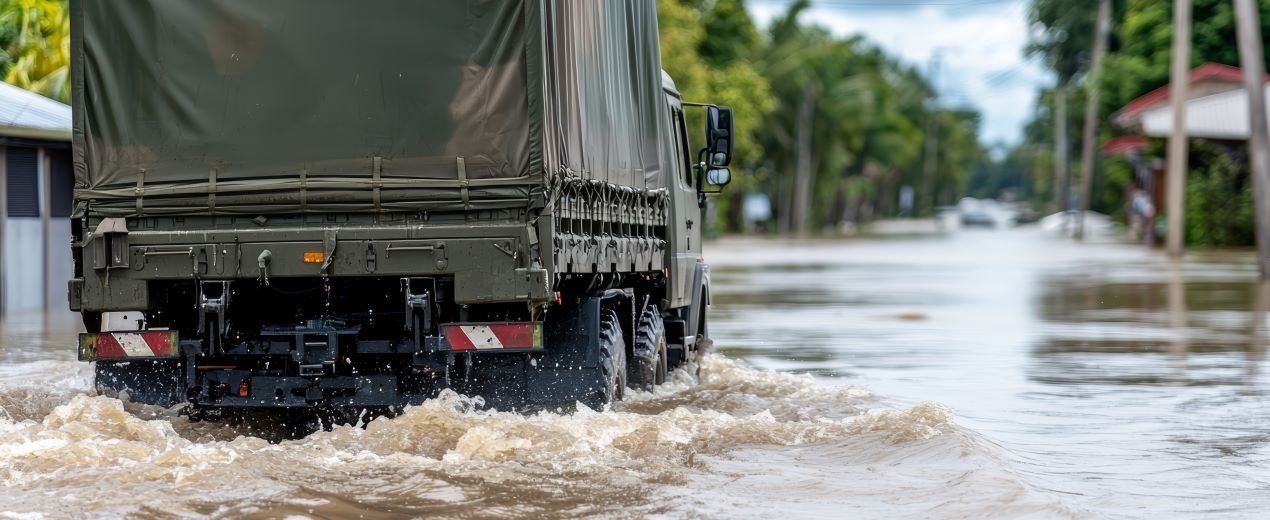In Threat Multiplier, Sherri Goodman, a trailblazing environmental attorney and former Deputy Undersecretary of Defense for Environmental Security, provides a compelling case for how climate change is reshaping military readiness and global security. Her decades of experience shine through as she connects the dots between climate-driven instability and the evolving priorities of military leadership. Here are the top insights from the book:
1. Climate Change as a “Threat Multiplier”
Goodman introduces the concept of climate change as a “threat multiplier” — intensifying existing global security challenges. Her in-depth analysis is supported by regional assessments of climate-related threats from senior military leaders. Storms, droughts, wildfires, and other climate-driven events exacerbate fragile state conditions, increasing the risk of conflict. This is especially true in regions where scarce resources, such as water, can fuel tension. Goodman also acknowledges that a scarcity of resources should not be viewed as only a threat. In some situations, water, or other essential resources can foster collaboration and peace building.
2. A Shift in Military Culture
Goodman recounts how environmental considerations transitioned from being dismissed as a “nuisance” in the 1990s to becoming integral to military strategy. Today, the military is leading efforts to reduce fossil fuel dependence, design climate-resilient infrastructure, and develop sustainable practices that improve combat efficiency while saving lives.
3. The Costs of Fossil Fuel Dependence
One striking statistic: delivering fuel to the front lines in Iraq and Afghanistan cost up to $400 per gallon, factoring in transport and security expenses. This reliance also came with tragic human costs, with over 3,000 U.S. military personnel killed along supply routes. Goodman highlights how reducing fossil fuel dependence in combat zones not only saved lives but also enhanced operational efficiency.
4. Adapting to a Changing Landscape
The book outlines the military’s proactive measures to adapt to climate change impacts. From designing bases to withstand severe weather to deploying units prepared for natural disaster response, Goodman underscores how readiness includes environmental resilience.
5. The Way Forward: Awareness, Adaptation, Mitigation, and Alliances
Goodman’s four-part framework for tackling climate challenges emphasizes the need for:
- Awareness of climate risks across military operations;
- Adaptation to protect personnel, resources, and installations;
- Mitigation of climate-related impacts; and
- Alliances to build partnerships that address shared threats.
Why It Matters
This book is more than a call to action; it’s a roadmap for integrating environmental awareness into global security planning. Whether you’re focused on climate change, military readiness, or the intersection of both, Threat Multiplier offers valuable insights into the strategies needed to address emerging threats in an uncertain world.
For professionals in environmental planning, this book highlights how solutions can align sustainability with mission-critical objectives — a principle we’re passionate about at Scout. Contact us at hello@scoutenv.com to see how we can assist with your environmental planning needs.
About the Author: As Scout’s Senior Biologist, Tom Lillie, PhD, brings over 35 years of experience including service as an officer in the U.S. Air Force, Professional Staff Member for the Senate Energy and Natural Resources Committee, Chief of Staff for the Bureau of Safety and Environmental Enforcement, and Program Manager for Natural and Cultural Resources at Headquarters Air Force. His favorite t-shirts are the ones hand-painted by his grandchildren.













